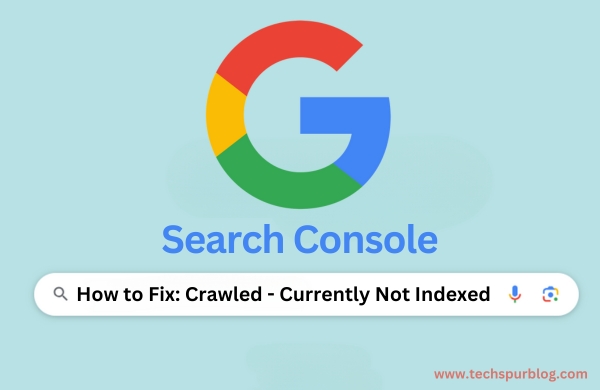
Are you frustrated because your website is not ranking on Google despite having quality content? If you’ve encountered the term “Crawled – Currently Not Indexed” in your Google Search Console, you might be wondering what it means and how to resolve it.
In this article, we’ll explore the reasons behind this issue and provide you with six effective strategies to fix it and improve your website’s chances of getting indexed and ranked on Google.
Understanding Crawled – Currently Not Indexed
In Google Search Console, the “Crawled – Currently Not Indexed” section refers to pages that Google’s web crawlers have discovered during their visits to your website but have chosen not to include in their search index. This means that these pages won’t appear in Google’s search results and, as a result, won’t receive organic traffic.
Also Read: The Future of SEO: How AI Technology is Revolutionizing the Game?
Reasons for Crawled – Currently Not Indexed Pages
Google decides not to index certain pages for a variety of reasons. One common cause is that the content on the page is not considered valuable enough to appear in search results. Here are six strategies to address this issue:
Ensure High-Quality Content
The first step to fix the problem is to ensure that your content is unique, valuable, and well-written. Avoid using automated content generated by AI tools without sufficient human editing, as Google can recognize poorly written or duplicated content and may choose not to index it.
Avoid Thin Content
Thin content refers to pages with too little information to provide value to users. Make sure your pages have enough relevant and informative text content, not just images or videos. Add additional content that clearly explains the topic of the page to improve its chances of getting indexed.
Also Read: What is the most important Google Ranking factor?
Implement Canonical Tags
Canonical tags are snippets of code that indicate the main source of a particular piece of content. Ensure that your pages have canonical tags to help Google understand which page contains the original and valuable content. This prevents duplicate content issues and increases the likelihood of indexing.
Use Internal Links
Internal links are links within your website that connect one page to another. Ensure that other pages on your website, especially the ones that are already indexed, link to the pages that are not being indexed. This internal linking signals to Google that the page is relevant and valuable.
Build Backlinks
Backlinks from external websites can signal to Google that your page is valuable and relevant. Focus on creating backlinks from other websites that are related to your niche or topic. Even relatively low-strength backlinks can positively impact indexing potential.
Also Read: SEO Link Building Techniques and What are the tools for SEO?
Utilize Social Links
Social media platforms like Twitter can be powerful tools for getting your content noticed by Google. Sharing your page links on social media, especially platforms like Twitter that Google frequently crawls, can increase the chances of indexing.
Conclusion
While Google’s indexing decisions are not entirely within your control, following these six strategies will significantly improve the likelihood of your pages being indexed and ranked on Google. Remember to prioritize unique and valuable content, avoid thin content, use canonical tags, incorporate internal and external links, and leverage social media to increase your website’s visibility and chances of ranking.
While ranking on Google may take time, implementing these techniques will undoubtedly boost your website’s overall SEO performance. So, focus on providing value to your audience, and the rest will follow!

Leave a Reply